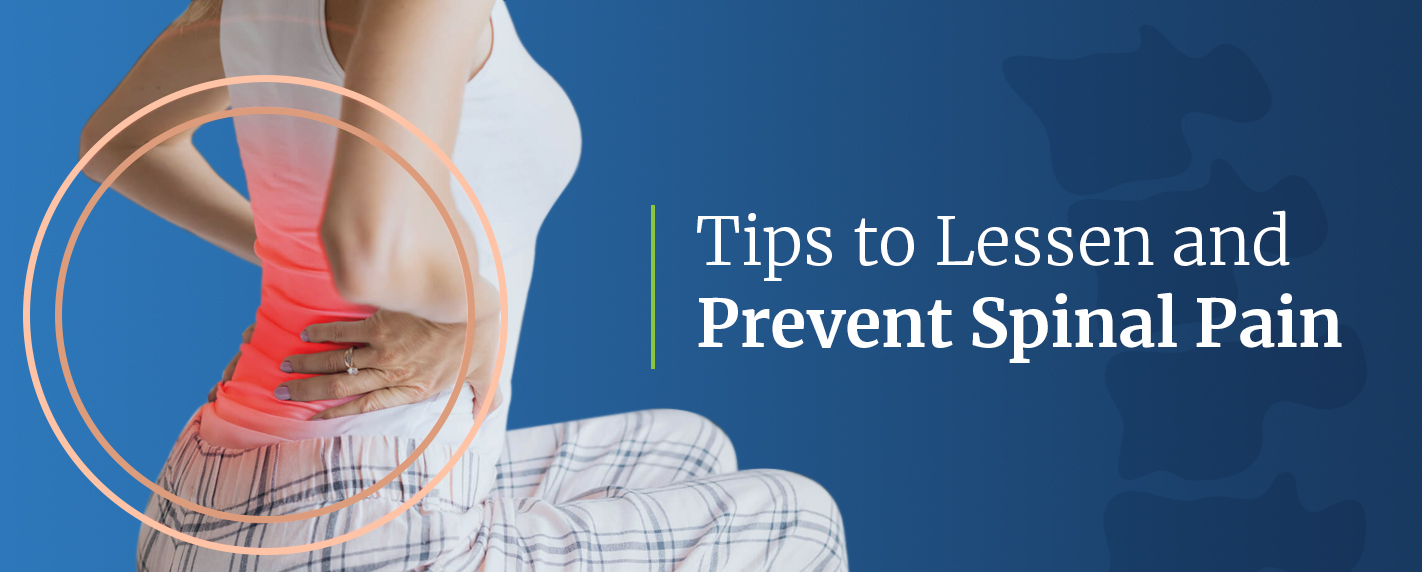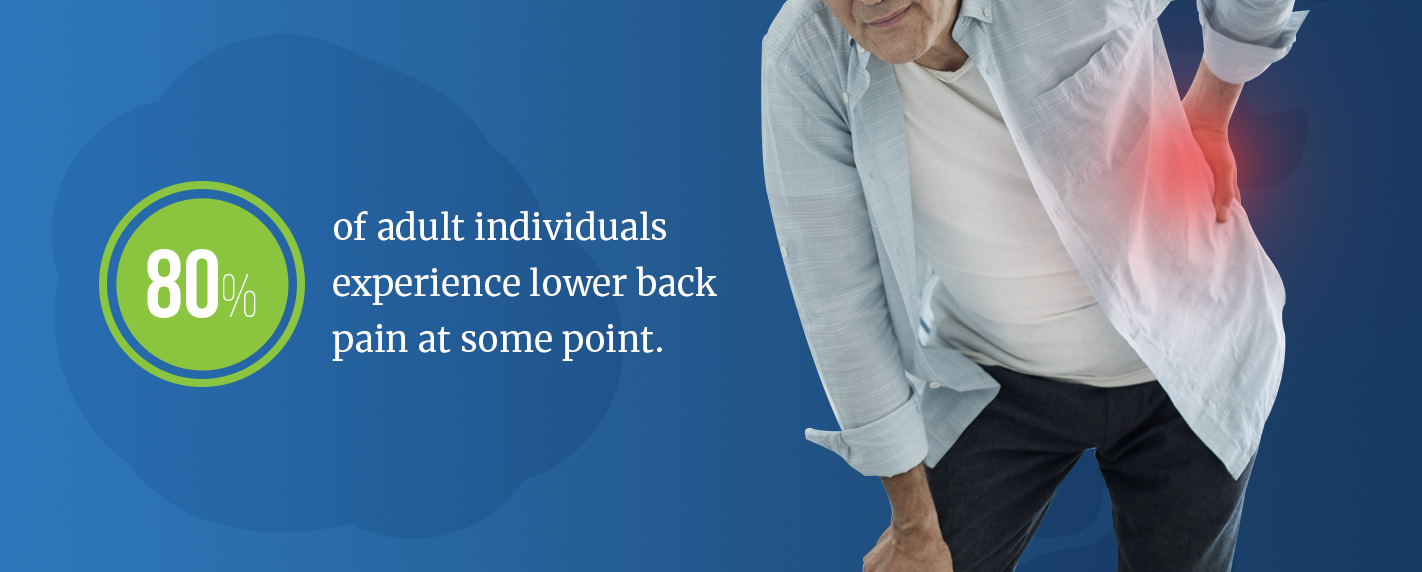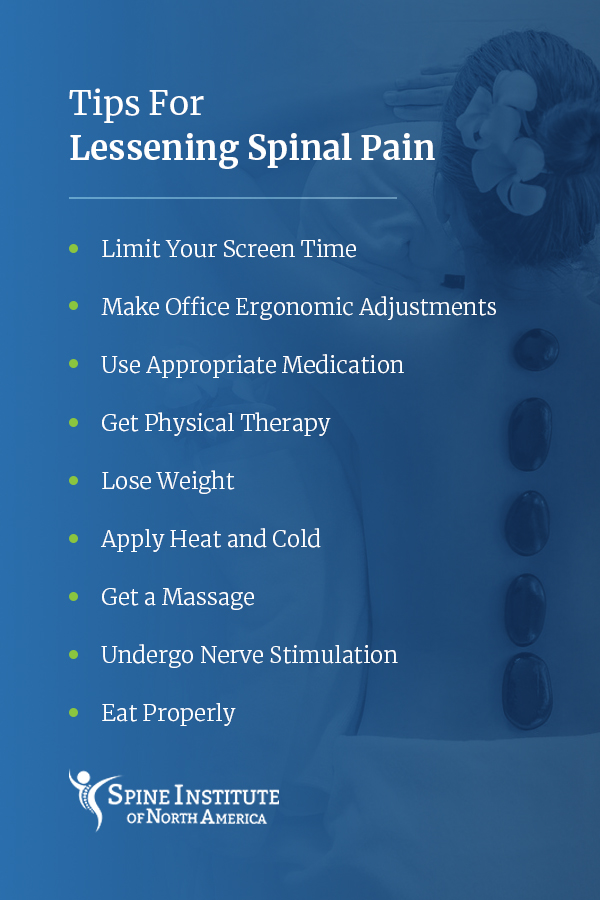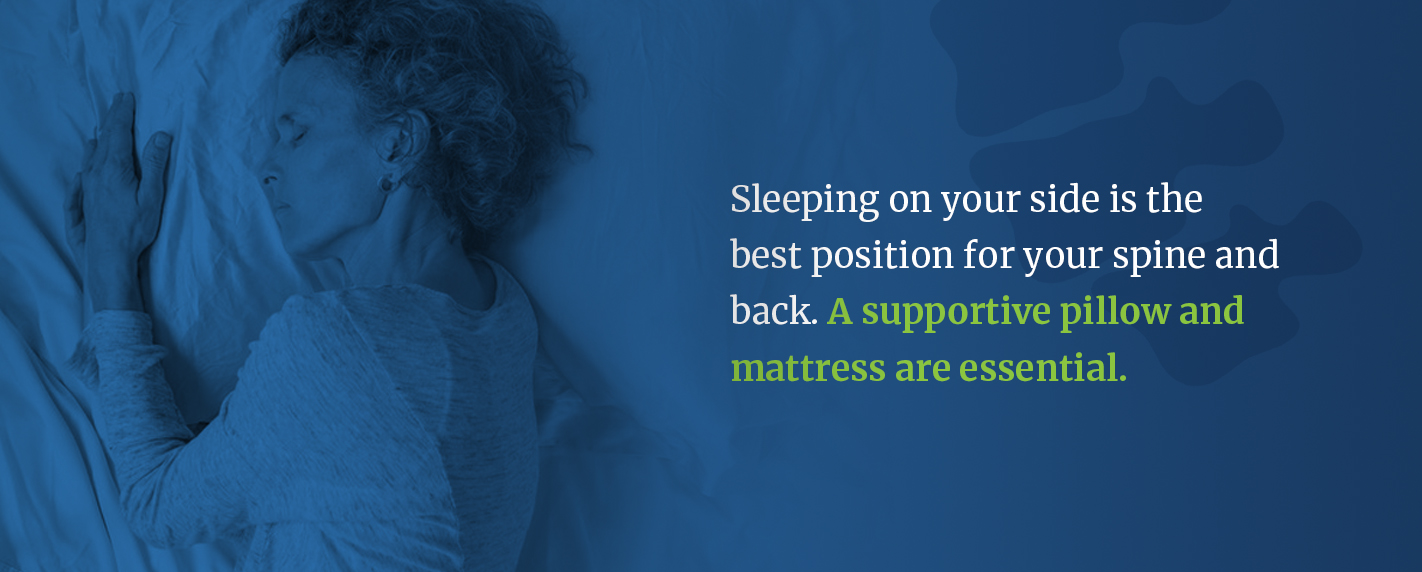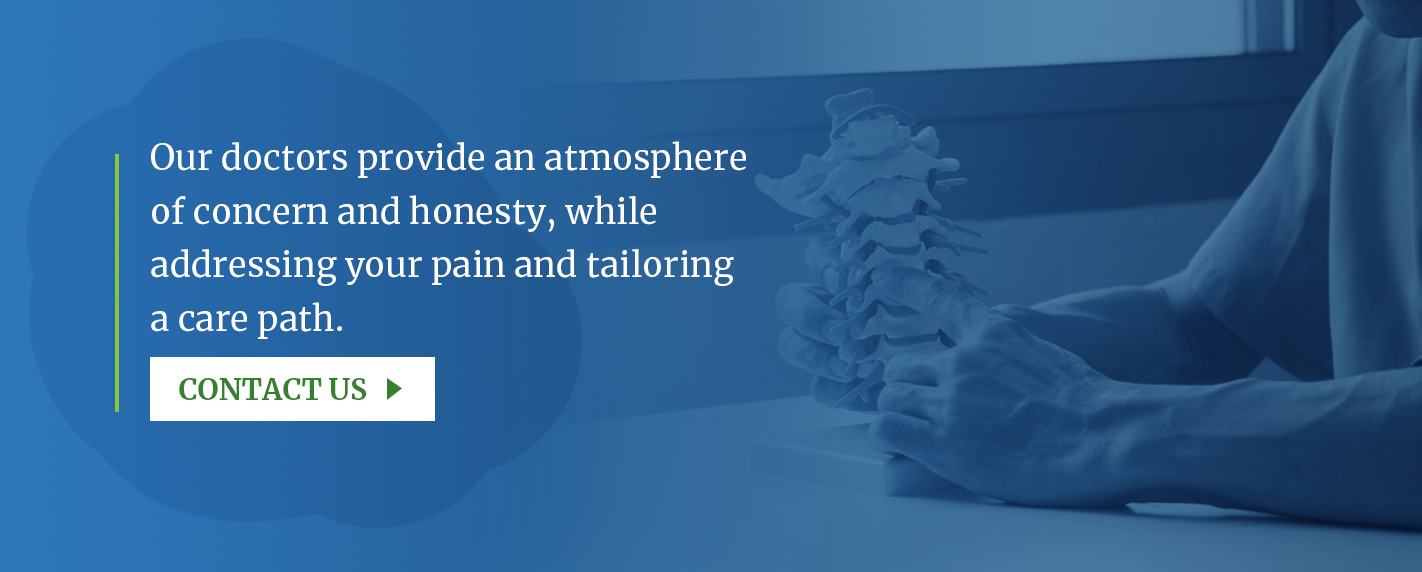Millions of individuals in the U.S. suffer from persistent back or spinal pain. It’s one of the top reasons for disability in those below the age of 45, and there are many causes. Back or spinal pain often occurs due to something being wrong with how your muscles, nerves, spinal joints and discs fit together and move.
Spinal pain in the neck and lower back is prevalent, and results in lost work days and productivity. Lumbar muscle sprains and strains are the leading causes of lower back pain.
Metropolitan Pain & Spine Institute (Metropolitan Pain & Spine Institute) can offer you the least invasive spine procedures to reduce or eliminate your back and spinal pain. But first, learn more about the symptoms, common causes and tips to lessen and prevent spinal and back pain.
Symptoms of Spinal Pain
If you’re looking for lower back pain relief, you’re not alone. Around 80% of adult individuals experience lower back pain at some point. It’s the top contributor of missed work days and the leading cause of job-related disability. One extensive survey showed over a quarter of adult individuals reported feeling lower back pain during the past three months.
The primary symptom of back or spinal pain is a pain or ache anywhere in your back, and in some cases, all the way down to your bottom and legs.
Some back problems can lead to pain in other areas of your body, depending on the nerves affected. While pain can go away without treatment, if you experience any of the following symptoms, you should seek medical attention:
- A fever
- Weight loss
- Pain down your legs
- Swelling or inflammation on your back
- Pain that extends below your knees
- Persistent pain in your back where resting or lying down doesn’t help
- Urinary incontinence
- Numbness around your genitals
- Difficulty urinating
- A recent blow, trauma or injury to your back
- Numbness around your bottom
- Numbness around your anus
- Loss of bowel movement control or fecal incontinence
Non-surgical cervical, low back and thoracic pain typically impacts the para-spinal or central soft tissue without radiating into your arms, down your legs or around your chest. However, pain that radiates from your spine into your chest wall or extremities could indicate structural nerve pinching in your spine, and you may require a surgical option if the pain doesn’t improve within days to weeks with conservative treatment.
Common Causes of Spinal Pain
The cervical and lumbar areas of your spine are susceptible to strain because of their involvement in twisting, bending and weight-bearing function. When your muscle fibers tear or stretch abnormally, it causes lumbar muscle strain. When you overexert your ligaments, it causes lumbar sprain. Both of these can occur from gradual overuse or sudden injury.
When you sprain or strain your lumbar spine, it inflames your soft tissues. This inflammation can cause pain and might also cause muscle spasms. While lumbar sprain or strain can be extremely debilitating, neither typically require neurosurgical attention.
Here are some common causes of back and spinal pain.
- Slipped or herniated discs: This condition is where the soft tissue in your discs between your joints has come out. Wear and tear typically cause this. Herniated discs can cause hip or low back pain due to pressed nerves in that area.
- Bulging discs: These protrude, but not like a herniated disc does. You typically don’t experience symptoms with this. But, if it presses on a nerve root, you’ll feel it.
- Wear and inflammation of your sacroiliac joint: This joint sits at the intersection of your pelvis and spine. It plays an essential role in helping transfer the weight of your upper body to your lower body. However, it doesn’t move much. Wearing away and swelling of your joint cartilage can occur following an injury, because of infection, arthritis and even pregnancy.
- Degenerative disc disease: The shock absorbers or discs between the vertebrae of your spine tear or shrink, causing your bones to rub together. This condition could occur as you age.
- Spinal stenosis: You experience this when your spinal canal narrows and adds pressure on your nerves and spine. Because of this, your shoulders and legs probably feel numb.
- Spondylolisthesis: You have a bone in your spine that slips forward, usually in the low back, and out of place. The degenerative type of this disease is arthritis, which weakens the ligaments and joints that keep your spine aligned.
- Cervical radiculopathy: You have a pinched nerve, which might be the result of a herniated disc or bone spur.
- Injuries and accidents: Vehicle accidents, muscle sprains, falls, fractures and strains cause back and spinal pain. Injuries can cause some of the physical issues, but some cause pain by themselves.
Know that you know the common causes and symptoms, let’s explore some tips to minimize and prevent spinal pain.
Tips For Lessening Spinal Pain
If you’re wondering how to reduce back pain, try following the tips below.
1. Limit Your Screen Time
As you probably already know, slouching in front of your computer screen, video game console or television is terrible for your back. The spinal complications due to this can start early. While we still need more research on this, a few studies link video games to an increased risk of back pain in kids.
Try and limit the time you and your children spend gaming, watching TV or using the computer. When you do these activities, practice good posture and take breaks regularly. More importantly, mix in some physical activities with your screen time.
2. Make Office Ergonomic Adjustments
Television and video games aren’t the only things that have you stuck to the screens. Working long hours hunched over a desk every day can also take a toll on your back and spine. Your neck, back, spine and shoulders could suffer if you don’t adjust your work ergonomics.
Position your computer monitor at eye level. Invest in a comfortable chair that has armrests and provides good lower back support. Keep your neck and head in line with your torso, relaxing your shoulders. While working, have your elbows close to your body and your wrists and forearms parallel to the floor.
3. Use Appropriate Medication
A couple of types of over-the-counter painkillers often help relieve back pain: acetaminophen and anti-inflammatory drugs. If your pain is more severe, your physician can also recommend a prescription-strength medication to help alleviate your discomfort. Keep in mind these drugs all have some side effects, so talk with your doctor first before taking them regularly. Also, know that medicine alone won’t likely solve your back and spinal pain problem.
4. Get Physical Therapy
A physical therapist can show you how to move, sit and stand in a manner that properly aligns your spine and eases the strain on your back. They’ll also show you exercises for back pain, as well as those intended for strengthening your core muscles, which naturally support your back and improve your posture.
5. Lose Weight
Having extra weight pull on your back all day isn’t good news for your spine. Losing a few pounds could help lessen or eliminate your pain, so you won’t have to rely on pain medications. Consider a personal trainer or registered dietitian if you’re having difficulty losing the extra weight.
6. Apply Heat and Cold
Experiment with cold and hot packs to see which works best for your spinal pain. Typically, cold therapy is excellent for lessening swelling and inflammation, while heat helps reduce cramping, tension and muscle spasms.
7. Get a Massage
Gently massaging a tense or sore muscle is an effective way of loosening it up and relieving pain. A study found traditional treatment along with massage therapy:
- Improves back function
- Reduces back pain
- Minimizes days in bed
- Lessens the use of anti-inflammatory medicines
The study also didn’t find a difference between structural massages and relaxation massages, but structural massages are a bit pricier. If cost is a problem, consider asking a close friend or partner for a massage.
8. Undergo Nerve Stimulation
There’s been research on specific treatments for stimulating nerves to decrease chronic back pain. If you’re not experiencing relief with conservative treatments, your doctor might add acupuncture to your treatment plan. They may also recommend transcutaneous electrical nerve stimulation, a form of therapy where mild electric pulses target nerves blocking incoming pain signals.
9. Eat Properly
Maintaining good eating habits will not only help you maintain a healthy weight, but also won’t place unnecessary stress on your body. You can strain your nervous system by eating greasy or excessively spicy food, leading to back problems. On the other hand, a healthy diet with plenty of veggies and fruits, dairy products, lean meats and whole grains helps keep your digestive tract functioning properly and contributes to your overall health and energy levels.
Tips to Prevent Spinal Pain
Here are some remedies for back pain prevention.
1. Exercise
An essential thing you can do for preventing spinal pain is to get up and move. If you’re not in good shape, performing even simple movements like lifting your child from their crib could hurt your back and cause pain. Back pain exercises can help get you into shape. Working out can also help keep fluid in your joints and keep your weight down. Remember, being overweight, particularly around your belly, can strain your back.
2. Be a Side Sleeper
Don’t sleep flat on your back. Sleeping on your side is the best position for your spine and back. If you have to sleep on your belly, tuck a pillow underneath your lower abdomen to take some of the stress off your back. A supportive pillow and mattress are essential, as well.
3. Bend Your Knees
When you lift heavy objects, be sure to keep your back straight and bend your knees. Don’t twist at your waist, and keep the item close to your body. Don’t lift heavy packages if you have knee problems.
4. Maintain Proper Posture
Chances are, you’re slouching over your phone or computer while texting or working and don’t even realize it. This hunched position can cause damage to your spine and back, leading to pain. Remember to maintain good posture at all times and set up an ergonomically correct workstation for yourself, both at work and at home. Take frequent breaks to perform stretching exercises.
5. Sit Properly
While sitting:
- Keep hips and knees level.
- Support feet or have them touch the floor.
- Sit up and keep your spine straight.
- Keep your monitor at arm’s length.
- Look straight ahead without straining your neck.
- Position document holders and monitor within or slightly below your line of sight.
- Adjust your chair’s armrests and lumbar support.
6. Drive Ergonomically
While driving:
- Slightly recline your seat to reduce back strain.
- Adjust the distance and height of your seat so your knees are slightly bent and the seat back supports your back.
- Take breaks often during long drives.
- Use lumbar support, such as rolled towels or cushions, for supporting your lower back’s natural curve.
- Raise the back of your seat, so you sit on a flat surface.
7. Quit Smoking
You probably know already that smoking increases your risk of cancer and heart disease. However, you may not realize it can also make present back pain worse. While it’s not clear how smoking affects the health of your back, it could narrow your blood vessels. When you have narrowed blood vessels, it leads to fewer nutrients and less oxygen reaching your spine, thereby making it more vulnerable to injury and slower healing.
8. Reduce Stress
Stress can also affect the health of your spine and back. Stress can make you tense your muscles, and continuous tension of this type can lead to back and spine pain. Performing activities that help you decrease stress could help prevent spinal and back pain. Some activities that could reduce stress are yoga, tai chi, biofeedback and meditation.
Contact Metropolitan Pain & Spine Institute for Your Spinal Pain Consultation
Individuals worldwide suffer each day with neck, back and spinal pain. Many try a variety of home remedies to decrease their pain, while others cope with it. Some try physical therapy and other conservative efforts, and some require more invasive surgical options and end up with long recovery time and little pain relief. No matter what level of spinal pain you’re experiencing, the Metropolitan Pain & Spine Institute understands and want to help eliminate your suffering.
Our doctors provide an atmosphere of concern and honesty, while addressing your pain and tailoring a care path. We commit to learning more about you and the pain you’re experiencing. Check our website to obtain information on conditions we can help you with to restore your life quality. Or, contact us to set up an appointment for a consultation.
This content was medically reviewed by Baher Yanni, M.D, on August 1st, 2019.
Sources:
https://www.aans.org/en/Patients/Neurosurgical-Conditions-and-Treatments/Spinal-Pain
https://www.webmd.com/back-pain/causes-back-pain#1
https://www.medicalnewstoday.com/articles/172943.php
https://www.healthline.com/health/back-pain
https://www.healthline.com/symptom/low-back-pain
https://www.ninds.nih.gov/Disorders/Patient-Caregiver-Education/Fact-Sheets/Low-Back-Pain-Fact-Sheet
https://www.webmd.com/back-pain/guide/back-pain-symptoms-types
https://www.mayoclinic.org/diseases-conditions/back-pain/symptoms-causes/syc-20369906
https://www.webmd.com/back-pain/ss/slideshow-low-back-pain-overview
https://www.webmd.com/back-pain/understanding-back-pain-treatment#1
https://www.healthline.com/health/7-ways-lessen-your-back-pain
https://www.webmd.com/pain-management/ss/slideshow-relieving-back-pain
https://www.webmd.com/back-pain/understanding-back-pain-treatment#1
https://www.everydayhealth.com/back-pain-pictures/ways-to-ease-back-pain.aspx
https://www.healthline.com/health/back-pain-home-remedies
https://healthfinder.gov/HealthTopics/Category/everyday-healthy-living/safety/prevent-back-pain
https://www.webmd.com/back-pain/tips-for-pain-relief#1
https://www.webmd.com/back-pain/features/12-back-pain-tips#1
https://www.everydayhealth.com/pain-management/back-pain/quick-tips-to-help-prevent-back-pain.aspx
https://www.aurorahealthcare.org/patients-visitors/blog/10-lifestyle-changes-help-prevent-lower-back-pain
https://www.hss.edu/playbook/top-10-tips-to-prevent-back-pain/
https://www.mayoclinic.org/healthy-lifestyle/adult-health/in-depth/back-pain/art-20044526
https://www.healthline.com/health/back-pain-management
https://www.spine.org/KnowYourBack/Prevention/Lifestyle-Choices/10-Tips-for-a-Healthy-Back
https://spineina.com/why-choose-Metropolitan Pain & Spine Institute/
https://spineina.com/endoscopic-spine-procedures/
https://spineina.com/low-back-pain/
https://spineina.com/pain-management-interventional-spine-procedures/
